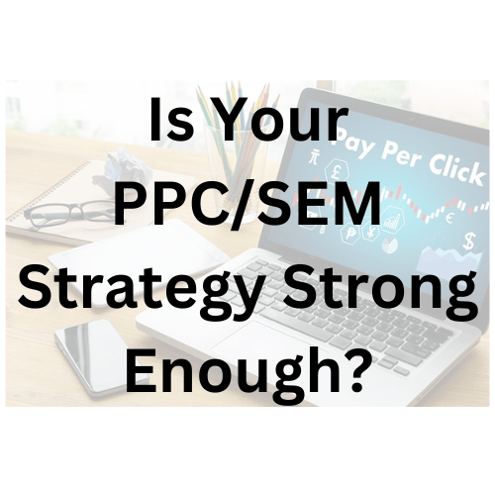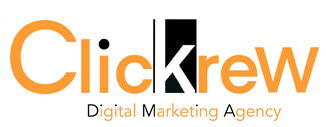Is Your PPC/SEM Strategy Strong Enough?
Evaluating the effectiveness of your PPC/SEM strategy can lead to significant improvements in your digital marketing results.
PPC


Is Your PPC/SEM Strategy Strong Enough?
In the fast-paced world of digital marketing, having a robust PPC (Pay-Per-Click) and SEM (Search Engine Marketing) strategy is crucial for driving traffic, generating leads, and achieving your business goals. But how do you know if your strategy is strong enough? In this blog, we'll explore key indicators of a successful PPC/SEM strategy, provide actionable tips to help you optimize your campaigns, and delve into advanced techniques to ensure your strategy is top-notch.
Key Indicators of a Strong PPC/SEM Strategy
1. High Click-Through Rate (CTR)
A high CTR indicates that your ads are relevant and engaging to your target audience. It means that users find your ad copy compelling enough to click on it. To improve your CTR, focus on creating clear, concise, and persuasive ad copy that includes strong calls to action (CTAs).
2. Strong Conversion Rate
Conversion rate measures the percentage of users who take a desired action after clicking on your ad, such as making a purchase or filling out a form. A strong conversion rate signifies that your landing pages are effective and aligned with your ad content. To boost your conversion rate, ensure your landing pages are user-friendly, relevant, and optimized for both desktop and mobile devices.
3. Positive Return on Ad Spend (ROAS)
ROAS calculates the revenue generated for every dollar spent on your PPC/SEM campaigns. A positive ROAS indicates that your campaigns are profitable and delivering a good return on investment. To maximize your ROAS, continuously monitor your campaign performance, adjust your bids, and allocate your budget to the best-performing keywords and ads.
4. Low Cost Per Click (CPC)
A low CPC means that you are getting more clicks for your budget, which can lead to higher traffic and more conversions. To achieve a low CPC, focus on optimizing your Quality Score by improving your ad relevance, landing page experience, and expected CTR.
5. High Quality Score
Quality Score is a metric used by search engines to determine the relevance and quality of your ads, keywords, and landing pages. A high Quality Score can lead to lower CPCs and better ad placements. To improve your Quality Score, ensure your ads and landing pages are highly relevant to your target keywords and provide a positive user experience.
Advanced Techniques to Strengthen Your PPC/SEM Strategy
1. Utilize Audience Targeting
Audience targeting allows you to reach specific groups of users based on their demographics, interests, and behaviors. By leveraging audience targeting, you can create highly personalized ads that resonate with your target audience. Platforms like Google Ads and Facebook Ads offer advanced audience targeting options, enabling you to refine your campaigns and improve their effectiveness.
2. Implement Remarketing Campaigns
Remarketing campaigns target users who have previously visited your website but did not convert. By showing tailored ads to these users, you can remind them of your products or services and encourage them to return and complete their purchase. Remarketing is a powerful tool for increasing conversions and maximizing the value of your existing traffic.
3. Leverage Ad Extensions
Ad extensions provide additional information and improve your ad's visibility and CTR. Use extensions like site links, callouts, structured snippets, and location extensions to enhance your ads and provide more value to users. Ad extensions can also improve your Quality Score, leading to lower CPCs and better ad placements.
4. Optimize for Voice Search
With the rise of voice-activated devices like Amazon Alexa and Google Home, optimizing your PPC/SEM strategy for voice search is becoming increasingly important. Voice search queries are often longer and more conversational than text-based queries. To optimize for voice search, focus on long-tail keywords and natural language phrases that users are likely to speak.
5. Use Automated Bidding Strategies
Automated bidding strategies use machine learning to optimize your bids in real-time based on your campaign goals. By leveraging automated bidding, you can save time and ensure your bids are always optimized for maximum performance. Google Ads offers various automated bidding strategies, such as Target CPA (Cost Per Acquisition), Target ROAS (Return on Ad Spend), and Maximize Conversions.
6. Conduct A/B Testing
A/B testing involves comparing two versions of an ad, landing page, or other campaign elements to determine which performs better. By conducting A/B tests, you can identify the most effective strategies and continuously improve your campaigns. Test different ad copy, creatives, CTAs, and landing page designs to find the best combinations for your audience.
7. Monitor Competitor Strategies
Keeping an eye on your competitors' PPC/SEM strategies can provide valuable insights and help you stay ahead of the competition. Use tools like SEMrush, SpyFu, and Ahrefs to analyze your competitors' keywords, ad copy, and landing pages. Identify their strengths and weaknesses, and use this information to refine your own strategy.
8. Optimize for Mobile
With the increasing use of mobile devices, optimizing your PPC/SEM campaigns for mobile users is essential. Ensure your ads and landing pages are mobile-friendly, with fast loading times and easy navigation. Use mobile-specific ad formats and extensions to enhance the user experience and drive more conversions from mobile users.
Case Studies: Successful PPC/SEM Strategies
Case Study 1: E-Commerce Business
An e-commerce business specializing in fashion accessories wanted to increase its online sales through PPC advertising. By conducting thorough keyword research and creating targeted ad groups, they were able to improve their ad relevance and Quality Score. They also implemented remarketing campaigns to target users who had abandoned their shopping carts. As a result, their CTR increased by 25%, and their conversion rate improved by 30%.
Case Study 2: Local Service Provider
A local service provider offering home cleaning services aimed to boost their online visibility and generate more leads. They used audience targeting to reach users in their service area and created compelling ad copy with strong CTAs. They also optimized their landing pages for mobile users and implemented ad extensions to provide additional information. This led to a 20% increase in CTR and a 35% increase in lead generation.
Case Study 3: B2B Company
A B2B company providing software solutions wanted to enhance their PPC/SEM strategy to drive more qualified leads. They leveraged automated bidding strategies to optimize their budget and maximize ROI. They also conducted A/B testing to identify the most effective ad copy and landing page designs. By continuously monitoring and adjusting their campaigns, they achieved a 40% increase in ROAS and a 50% increase in lead quality.
Conclusion
A strong PPC/SEM strategy is essential for achieving your digital marketing goals. By focusing on key indicators like CTR, conversion rate, ROAS, CPC, and Quality Score, and implementing advanced techniques like audience targeting, remarketing, ad extensions, and automated bidding, you can ensure your strategy is effective and impactful. Ready to take your PPC/SEM strategy to the next level? Contact us at Clickrew to learn how we can help you succeed in the competitive digital landscape.
